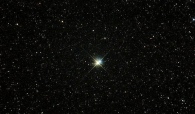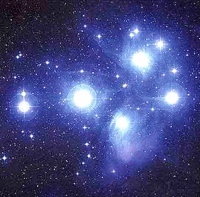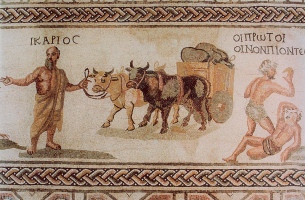- About Us
- Columns
- Letters
- Cartoons
- The Udder Limits
- Archives
- Ezy Reading Archive
- 2024 Cud Archives
- 2023 Cud Archives
- 2022 Cud Archives
- 2021 Cud Archives
- 2020 Cud Archives
- 2015-2019
- 2010-2014
- 2004-2009
 |
(Jul 2014) Stars |
Tiny holes in the night sky through which the brightest of all lights shine -those silvery piercing dots- have simultaneously mystified and clarified our understanding of the universe as a whole. All the history of mankind hinges upon their role, in a sense, for they inspired Homer, Ovid, Herodotus and countless others to tell the tales of their adventures through the Heavens. Their physical attributes as related to their behaviors served as the basis for a scientific understanding of the cosmos for everyone from The Three Wise Men to Stephen Hawking. Their solar sauntering through the great expanse -though paradoxically fixed in the evening shroud above-reveals the nature of those forces that hold together all we see around us. People wish upon them, they sleep under them, and on rare occasions even believe in them. But almost never do people write about them; except to say what gases comprise them, pressures seize them, forces influence them and what particles proceed from their funerals. And indeed if God really did die, as Nietzsche insisted, it would have been more like that of a star’s death; ripping a black hole in space, time and the tightly pulled fibers of our own empty, foolish hearts.
Their physical attributes as related to their behaviors served as the basis for a scientific understanding of the cosmos for everyone from The Three Wise Men to Stephen Hawking. Their solar sauntering through the great expanse -though paradoxically fixed in the evening shroud above-reveals the nature of those forces that hold together all we see around us. People wish upon them, they sleep under them, and on rare occasions even believe in them. But almost never do people write about them; except to say what gases comprise them, pressures seize them, forces influence them and what particles proceed from their funerals. And indeed if God really did die, as Nietzsche insisted, it would have been more like that of a star’s death; ripping a black hole in space, time and the tightly pulled fibers of our own empty, foolish hearts.
Science tells us that a star is an illuminated sphere, a sphere comprised of a plasma-type material of compressed gases which is maintained by its own gravity. Furthermore, this gravity draws other material bodies to it in what we call a solar system. However, these other collections of mass are not visible to the naked eye like the stars themselves are. We are able to see these captains of planets, unlike the planets themselves, in virtue of their intense, interminable combustion over very long periods of time. The stars are stars of the universe, cast in the lead role of nightly beauty. But behind the scenes they rule their systems with the tyrannical grace of a reliably volatile series of explosions and a powerfully compelling, invisibly guiding hand.
We are able to see these captains of planets, unlike the planets themselves, in virtue of their intense, interminable combustion over very long periods of time. The stars are stars of the universe, cast in the lead role of nightly beauty. But behind the scenes they rule their systems with the tyrannical grace of a reliably volatile series of explosions and a powerfully compelling, invisibly guiding hand.
But this definition fails to grasp the psychological and mythological sense of them to us. Consider that Icarius and his family were made stars by Dionysius after he gave the god wine but it was mistaken for poison. No one would consider this transformation one of going from the frying pan and then into the hydrogen combustion of several suns billions of miles away. Nor that the Hesperides attending their midnight garden are actually figures of mass and gravitational force incalculably larger than the planetary crops encircling them. We mean far more by stars than we understand of them. And I suspect that although we may know every last thing about their constituency, I doubt we know the first thing about their personal history.
And I suspect that although we may know every last thing about their constituency, I doubt we know the first thing about their personal history.
But I think that most of the confusion we have of the stars is in their multiplicity, not their complexity. Whether it’s a thousand or a trillion points of light, there can be only one lamp unto one’s foot and light unto one’s path. If Romeo had seen what 'lights’ through yonder window breaks, Juliet’s identity would have been obscured by all the other illuminating sources; she would hardly have been a sun at all-just a star among many stars. Perhaps this is what the musical group 'Coldplay’ meant when they sang that you are ‘a sky full of stars;’ in their recent hit by the same name. I wouldn’t be surprised if all that was good, all that was true and all that was beautiful was not one particular star, but all of them. Like the rippling water of a lake or pond tears apart any image cast on it into thousands of twittering twinkles, the truth behind it all was standing at the bank of our flooded perceptions of what we see dispersed in the shattered reflections in it. And so, if we wish upon a star, it is quite likely that the fulfillment of this wish is in the image they comprise as a whole, and not in an individual sun that burns not quite as hot as our desperate hopes of becoming like one… someday.
Algernon Gedgrave is an author, educator and adventurer extraordinaire. For more information visit http://algernongedgrave.weebly.com/ and follow his blog at http://gelafold.blogspot.com/.
